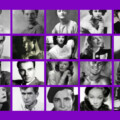“In the unification of two minds, orientation of sexuality is irrelevant.”
Abhijit Naskar
There are many people who, in terms of sexual orientation, think that there are only lesbian, gay, transgender, bisexual and straight (commonly known by the acronym LGTBH), but just like gender, your sexual orientation can exist on a broad spectrum that results in different types of relationships. You may even find that your sexual orientation fits into more than one category.


The following list may not be exhaustive, but here are a number of different sexual orientations to consider (almost all of which also have romantic orientations):
Allosexual
This term describes anyone who experiences sexual attraction. This would be the opposite of someone who’s asexual (see below).
Androsexual
This term is used to describe a person who’s attracted to men or masculinity. This term is inclusive of all people who identify as men or masculine regardless of their anatomy or sex assigned at birth.
For example, a cisgender female (someone who identifies as female and was assigned female at birth) who is attracted to men and/or masculine individuals might consider herself androsexual. A nonbinary individual (someone who doesn’t identify with the polar opposites of male or female) who’s attracted to a masculine gender-nonconforming individual might also consider themselves androsexual.
Asexual
Also known as “ace”. asexual describes someone who has little to no sexual attraction toward other people of any gender. And because sexual orientations are on a spectrum based on someone’s personal feelings and experiences, asexuality can vary in a lot of ways.
For example, you might not experience sexual attraction, but your personal relationship with sexual behavior can differ in the following ways:
Sex-favorable
This means you have positive feelings about some types of sexual activity in some situations.
Sex-averse
This means you may not want to engage in any sexual behavior.
Sex-repulsed
If you’re sex-repulsed, you typically don’t like to be subjected to sexual content of any kind (in conversation or in movies and on TV) or you don’t like the idea of sex.
Sex-indifferent
You can also feel neutral about sex and sexual behavior.
There are many other subcategories of asexuality, too. You can identify as cupiosexual, which means you don’t experience sexual attraction, but you desire to engage in sexual behavior or a sexual relationship. Or you can identify as graysexual, which means your level of sexual attraction to someone changes over time or isn’t always present or intense.
Also, there’s the aromantic orientation, which describes someone who experiences little to no romantic attraction to other people of any gender.
Bicurious
This term typically describes someone who ascribes to the male/female binary in their gender identity but may be exploring their sexuality and hasn’t yet determined their sexual orientation.
A bicurious person accepts differences in sexual orientation even if he or she has not yet decided on any identity, either because he or she has had limited experiences or because he or she is not ready to make such a statement.
Bisexual
This sexual orientation describes someone who experiences emotional, sexual or romantic attraction to people who are similar to or different from their own gender. Historically, this term describes someone who ascribes to the male/female binary and who may experience attraction to both males and females.
Others may use this term to indicate that they experience attraction to other gender identities beyond the male/female binary, including genderqueer and transgender individuals (someone whose gender identity does not match their assigned sex at birth).
Being bisexual doesn’t mean you always experience sexual attraction to other genders equally. And being in a relationship with someone who identifies as one or multiple genders does not necessarily mean you’re no longer bisexual.
Who you’re with doesn’t always define how you identify. You can be bisexual and married to a heterosexual partner of another gender.
Demisexual
If you’re demisexual, you may only find someone sexually attractive if you’ve developed an emotional or romantic connection with them.
For many people who identify as demisexual, they may hold off on participating in sexual activity until they’ve developed that emotional and romantic connection.
In our culture now, which is much more open about sexuality and sexual experiences, someone can define themselves as demisexual and it makes it very clear from the beginning, “We’re not going to hook up on the first date”.
Fluid
This term is an aspect of an identity or orientation that means it could shift or change over time.
How you identify today as an individual may not be how you identify in a couple of months as feelings evolve and our understanding of ourselves becomes clearer.
How you feel about someone else can also evolve, including your sexual, emotional or romantic attraction to people of varying gender identities.
Gay
This describes someone who experiences emotional, sexual or romantic attraction to people of their same or similar gender.
This term is sometimes used specifically referring to men who are attracted to other men, but is also used for women attracted to women.
Historically, the medical community used the term homosexual, but that’s largely considered an outdated term by many members of the LGBTQIA+ community because of its history of marginalization — or the act of being excluded or considered of little consequence.
Gynesexual
This term is used to describe a person who’s attracted to females or femininity. Using this term is inclusive of all people who identify as female or feminine regardless of their anatomy or sex assigned at birth. This term refers to anyone who is attracted to someone who identifies as female or feminine.
For example, you might use this term if you’re a cisgender male who’s attracted to females and/or femme-identifying individuals. A nonbinary person who’s attracted to femme men and/or female-identifying individuals may also prefer to use this term to describe their sexual orientation.
Heterosexual
Also known as “straight”, this term is used to describe a person who experiences emotional, sexual or romantic attraction to people of the opposite gender. Some may find the term “straight” derogatory, as it implies any orientation that’s not heterosexual is wrong in some manner.
Lesbian
This describes a woman or female-identified individual who experiences emotional, sexual or romantic attraction to people of their same or similar gender.
LGBTQIA+
An acronym to describe anyone who isn’t exclusively heterosexual or cisgender, this grouping is intended to be an inclusive term that takes into account all genders and sexual orientations.
The letters stand for lesbian, gay, bisexual, transgender, queer or questioning, intersex and asexual (sometimes the “A” stands for ally). The + sign represents everyone else who is a part of the broader LGBTQIA community.
Pansexual
A synonym of omnisexual, this term describes anyone who experiences emotional, sexual or romantic attraction to others regardless of gender.
This takes bisexuality out of the binary. Pansexual is someone who believes gender is not important to them in terms of who they have a relationship with.
Pomosexual
Pomosexual refers to anyone who rejects any and all labels related to sexual orientation, either because they feel like they don’t align with any one specific orientation, or they simply don’t agree with labeling.
Queer
This is an umbrella term that describes anyone who isn’t exclusively heterosexual or cisgender.
This term bridges the gap between independent identities and orientations, as you may fall anywhere on the spectrum and can even experience a combination of more than one orientation or gender.
Some may view this as a derogatory term; however, many have reclaimed this term as an affirming description for all LGBTQIA+ individuals.










